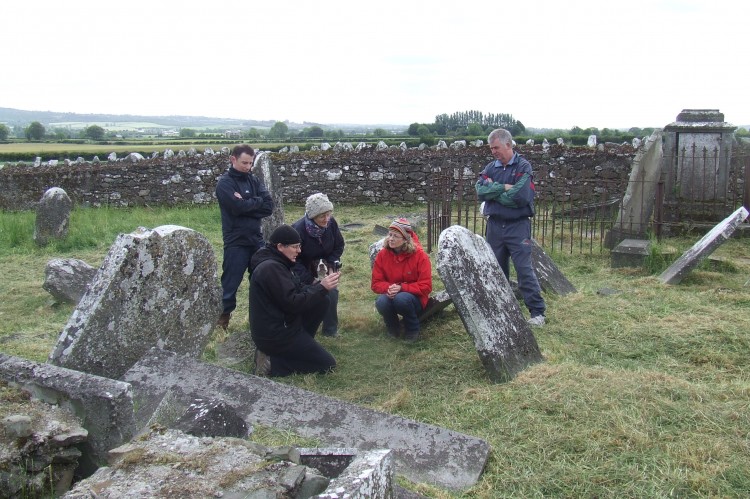Oct
01
2011
By Finn
2 min to read
 Introduction
Introduction
Making a good photographic record of the memorial stones in an historic graveyard is an important first step in any graveyard survey. The photographs provide a record of the memorial stones at the time the photograph is taken and in and of themselves form an important element of the baseline record. Photographs can also play an important part in recording the memorial stone inscriptions which is the ultimate conservation tool available to any community group. In the Historic Graves methodology geo-located photographs are a crucial element in the systematic approach to graveyard survey.
As archaeologists, photography forms an important part of our day-to-day work. On excavations photographs are a crucial element of the excavation archive and many hours can be spent cleaning features so that they can be interpreted correctly but also so that they look good in a photograph. In my early days on sites only senior members of the excavation team were allowed to take the photographs. The photography bag would invariably contain, three cameras all loaded with appropriate film in order that both colour and black and white photographs could be processed along with slides. Photography required an understanding of lenses, f/stops and depth of field. It was a real sub culture with its own language and technical expertise.
 The advent of digital photography and point and shoot cameras has really changed the way we view photography. With digital cameras in automatic mode all of the settings can be controlled by the camera and they will generally produce very good results.
The advent of digital photography and point and shoot cameras has really changed the way we view photography. With digital cameras in automatic mode all of the settings can be controlled by the camera and they will generally produce very good results. Maurizio Toscano from Historic Graves has produced a guide to photographing memorial stones which forms part of the information pack distributed to all participants on one of our graveyard workshops. The following points are taken from that guide.
Framing
The first piece of simple advice relates to correctly framing the subject which in our case is a memorial stone. Pictures should be taken directly in front of the memorial stone and in portrait mode. The viewfinder should be focused on the memorial stone with not too much background however care should be taken not to crop too closely either. Where possible this framing should be done by physically moving closer or further away from the memorial stone. Zoom should only be used where movement is curtailed by the location of the stone.
 Light Conditions
Light Conditions
Lighting is one of the crucial components of quality photography and something professional photographers can obsess about endlessly. Two factors concern us when photographing grave memorials.
Position of the Sun
It is important to avoid having the sun behind the memorial when taking the survey photograph. As the majority of grave memorials are positioned with the inscribed side facing westward this means the ideal time to undertake a photographic survey is in the morning. Afternoons on sunny days should be actively avoided.
Brightness
Most cameras can use three methods to read the amount of light present in a scene. By default it is set to Evaluative, a technique that sets the brightness based on the overall scene. In our photos the centre of the scene is much more important so the best option for us is the Center Weighted Average metering type and the default setting should be changed to this.
Pixel Resolution, File Size and Format
 For the Historic Graves project the photographs resolution is important as it should be large enough to allow us to zoom into the image and more easily read the inscriptions. The design of the Historic graves web pages allow us to easily zoom into the photographs during viewing.
For the Historic Graves project the photographs resolution is important as it should be large enough to allow us to zoom into the image and more easily read the inscriptions. The design of the Historic graves web pages allow us to easily zoom into the photographs during viewing.We have found that the best resolution which balances the need for detail and ease of use is 5 Mega Pixels (2592x1936). Images at this resolution record enough detail and produce files not bigger that 3MB. Most compact cameras use just one file format (JPEG). Professional cameras allow for non-compressed formats. Only JPEG files will be accepted by the Historic Graves database.
Conclusion
Due to technological advances in camera design, with a small amount of thought and tweaks to the standard set up most of us will be able to produce grave memorial photographs which will provide a good record of the memorial stones. One final tip to help anyone with shaky hands is to mount the camera on a monopod which helps to stabilize the camera but unlike a tripod allows for a rapid set up at each memorial stone.
Blog category:
Blog PDF:



